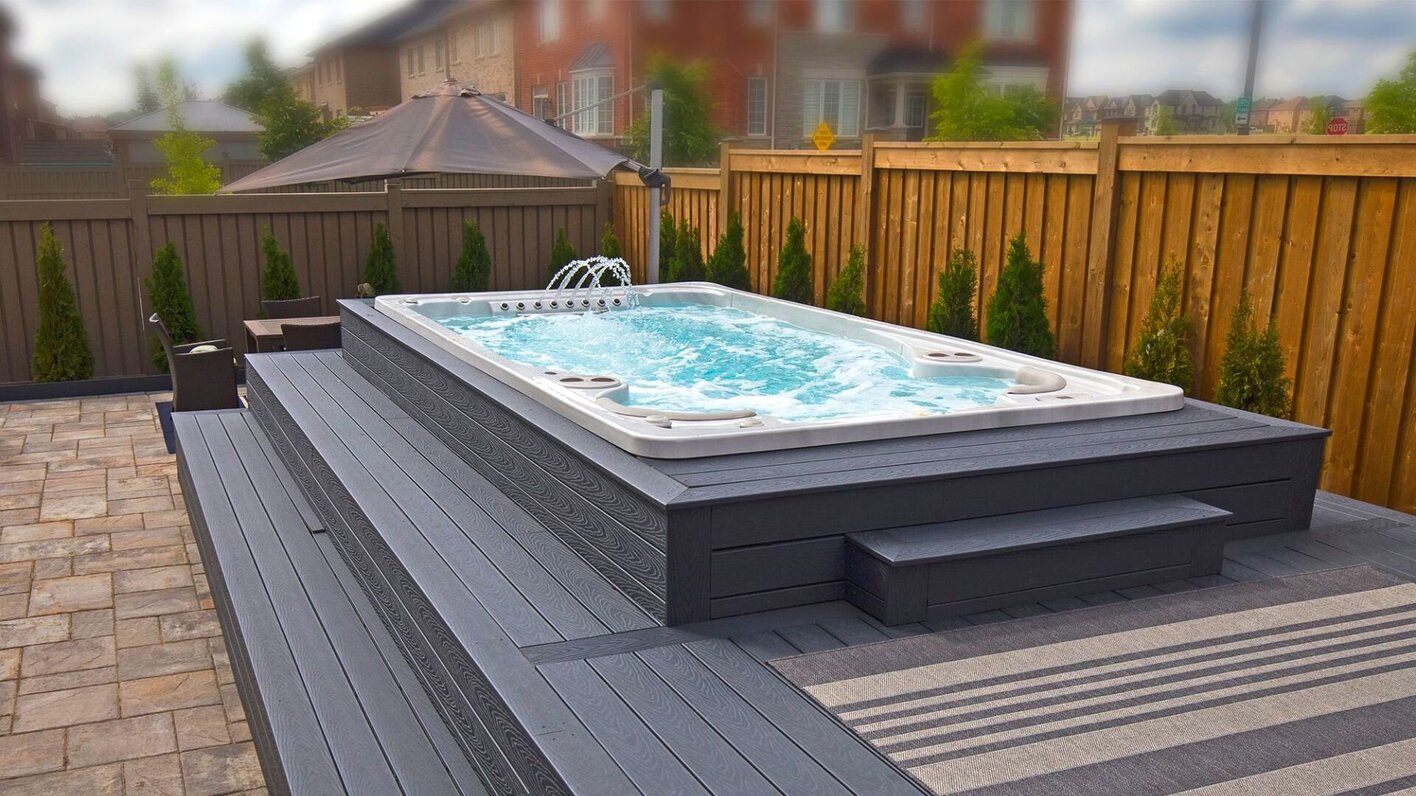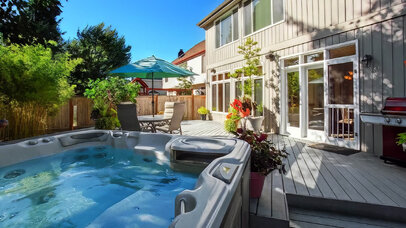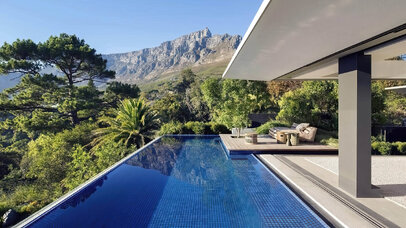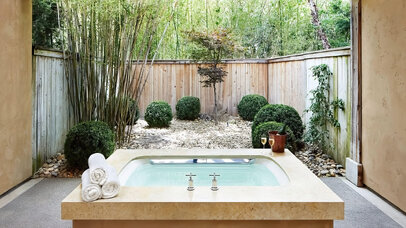Among all the luxuries you can get for your house, possibly nothing oozes as much class and affluence as a spa.
Nothing beats relaxing in the warm waters of a spa or a hot tub after a long and tiring day at work. And if you have one right in your backyard!
Consider a few things before you immerse yourself in bliss by installing one on your property. For instance, many people get confused when deciding which type of spa - inground or above-ground - will be the best for them.
But there is no need to worry because, in this article, we have compared these types in detail. So, if you are curious, then keep on reading!
Benefits Of Having A Spa
Luxury spas, or hot tubs, come with their benefits. The warm water and gently pulsing jets provide an excellent ambience for you to destress and unwind. It helps ease your nerves and calm your body within moments.
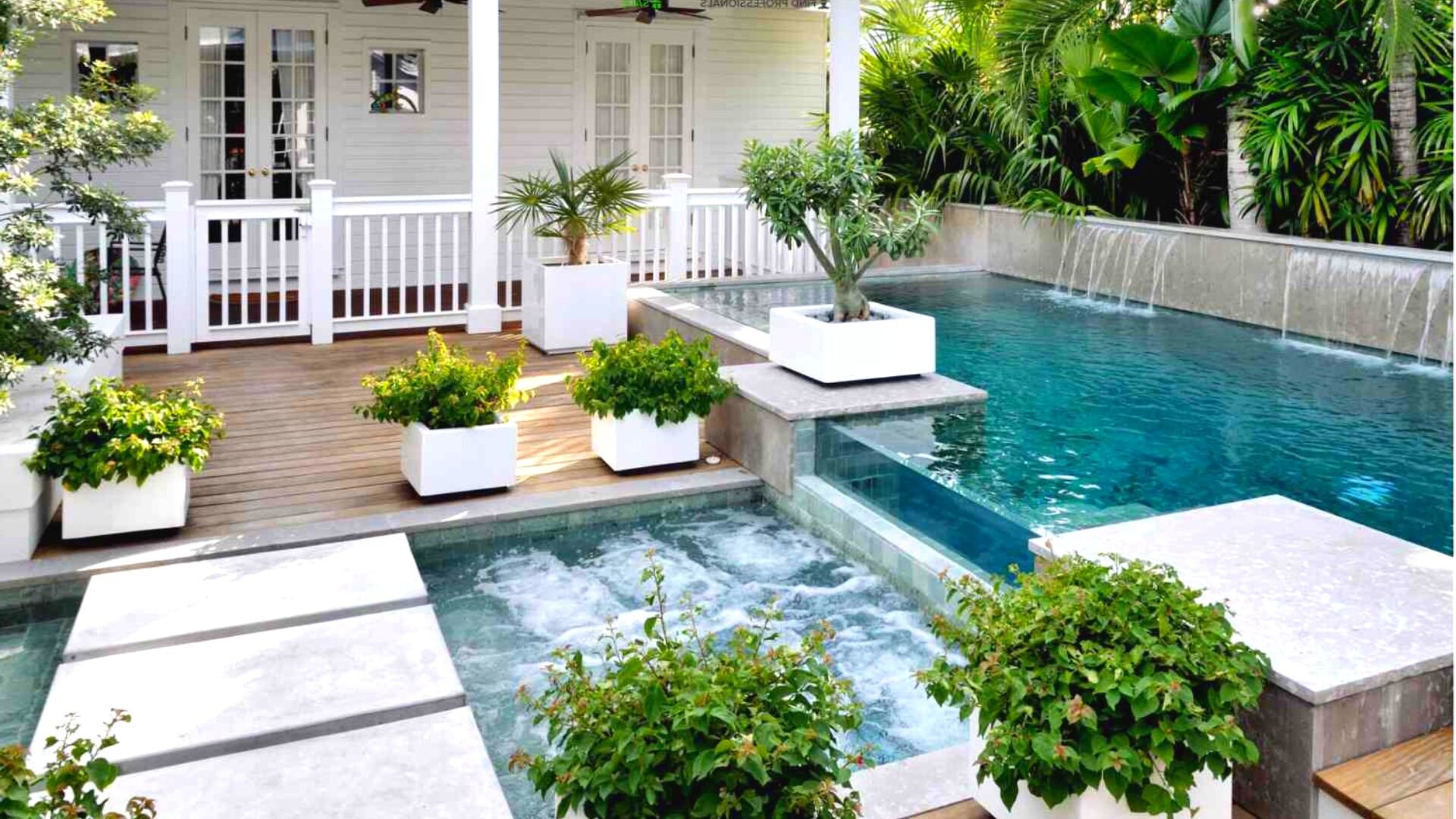
The water’s heat softens the stiffness in your muscles and joints. Likewise, it widens the blood vessels, which helps to enhance blood circulation. Overall, it ensures a great experience, and by the end of a hot tub session, you will be fully energised in your body and mind.
Inground Spas
Now that you know the benefits of a spa, let us discuss the inground hot tub and its pros and cons.
As the name suggests, this hot tub is embedded in the ground, like a typical swimming pool. However, the area covered by the spa is considerably less than that of the ground pools. The depth is also lower than a pool- similar to hot tubs.
So, in-ground hot tubs need to be dug into the ground. Keeping that in mind, here are some pros and cons of such a spa.
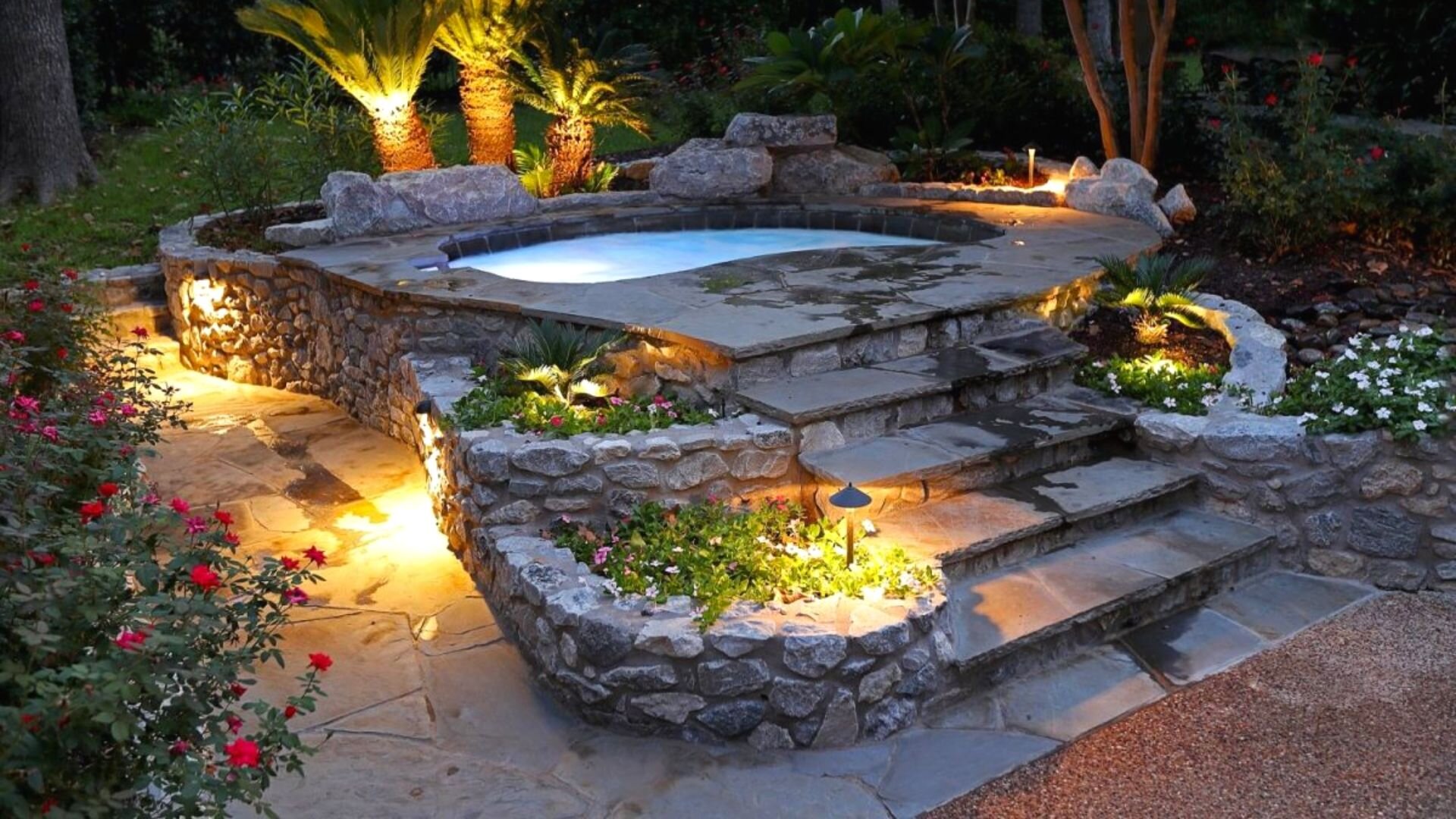
Pros
1. Highly Customisable
Most in-ground spas are not pre-built so you can customise each aspect of this spa according to your preferences and requirements. In other words, you can choose any shape, size, or feature in the hot tub.
2. Aesthetically Pleasing
You can design the in-ground spa with lights and attractive tiles. These can significantly enhance the visual appeal of your backyard, both during the daytime and at night.
3. Allows For Bench Seating Arrangements
An inground spa allows for bench seating along its edges for greater convenience. So, you can dip your feet in and relax with friends on a sunny day.
4. Highly Accessible And Safe
In most cases, in-ground hot tubs are placed near swimming pools, making jumping into them easier after a pool session. Similarly, since there are no raised edges in this type of spa, even older people can get into it without issues. You don’t need to worry about tripping or falling, either.
Cons
1. Complex Installation Process
Installing an in-ground hot tub is much more complex than installing an above-ground option. The ground needs to be excavated and prepared per the design, which can take a long time. You will also need to worry about getting the permits from the local council to start digging, which can be another headache.
2. Difficult To Maintain
An inground hot tub is relatively difficult to maintain or troubleshoot. This is because most components - such as heaters, water lines, and so on - are typically underground or well concealed.
3. Slow Heating
Since it is embedded in the ground, such a spa tub requires a considerably long time to warm up before you can use it. Also, the heat quickly dissipates in the surrounding ground, making maintaining the temperature challenging.
Above-Ground Spas
Above-ground spas are located above the ground, similar to a bathtub. Generally, the above-ground model is a self-contained unit that comes pre-built. With that in mind, the pros and cons of this model are described as follows.
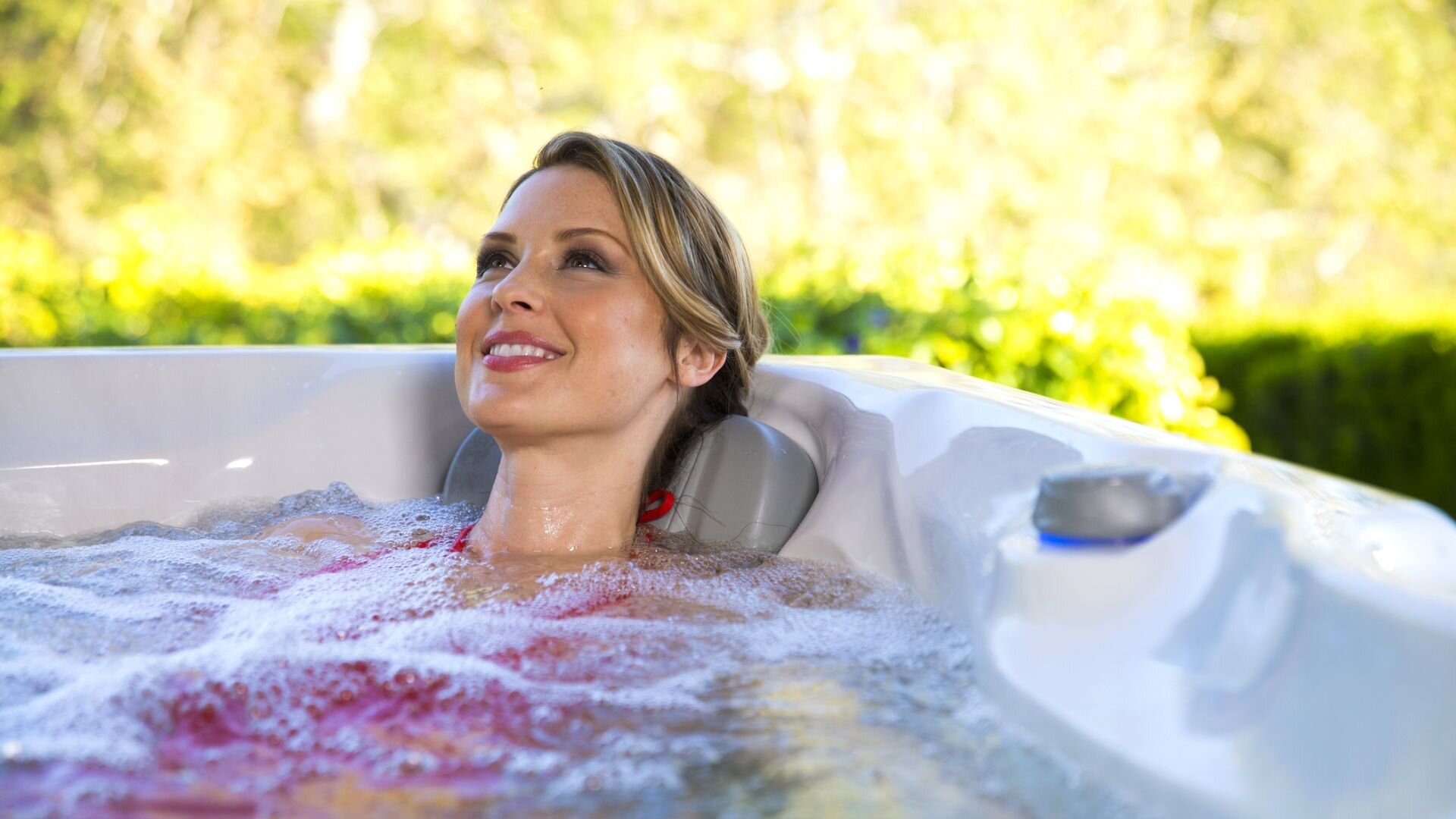
Pros
1. Easy Installation
Since it is pre-built, installing an above-ground hot tub is relatively easy. All you need to do is place it conveniently, set up the water supply and other features, and be ready.
Some hot tubs are designed as portable spas so that you can even install them indoors.
2. Easy To Maintain
Most of the components in an above-ground spa are located in easy-to-access spots. So, cleaning and maintaining these spas are comparatively easier than their in-ground counterparts.
3. Does Not Need To Be Preheated
An above-ground hot tub does not lose heat as quickly since its walls lie in the open. Because of this, it does not need to be preheated too much.
4. Offers Ergonomic Seating Options
You can install various ergonomic seating options around the hot tub. As a result, everyone can relax on the sides of the spa, regardless of their body type or size.
Cons
1. Limited Customisation
With an above-ground spa, you do not have a lot of customisation options since it is available only in select sizes and shapes.
2. Not Very Safe Or Accessible
The raised edges of an above-ground hot tub can cause tripping accidents or injuries if you inadvertently bump into them. Besides, the raised edges mean that older people will have difficulty getting into the hot tub.
3. Does Not Blend With The Landscape
Compared to inground hot tubs, an above-ground model stands out in your backyard, not in a good way. Because of its design, it might not blend well with other backyard features that you may have. As a result, some people may find it less appealing than the inground option.
Choosing an Inground Vs. An Above-ground Spa
And there you have it - a comparison of inground and above-ground spas. As you can see, both have advantages and disadvantages, so the final decision to get one should be based on what you want.
If you want your backyard to look pretty, an inground hot tub should be your choice. But if you want more practical utility, an above-ground spa is better.
If you want to build a spa but don’t know where to start, it’s time to hire a professional.
A good pool builder will walk you through all the options and help you make an informed decision. So, please speak to our Sydney team at The Pool Co today!
They’ll help you choose between above-ground or inground spas to get the best value for your money.
